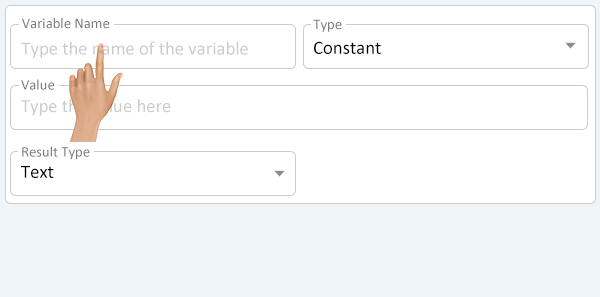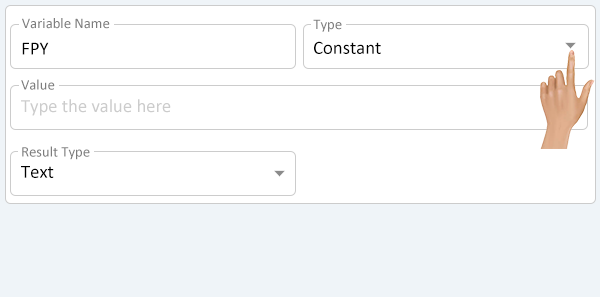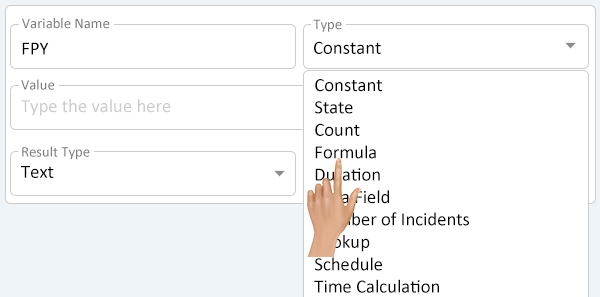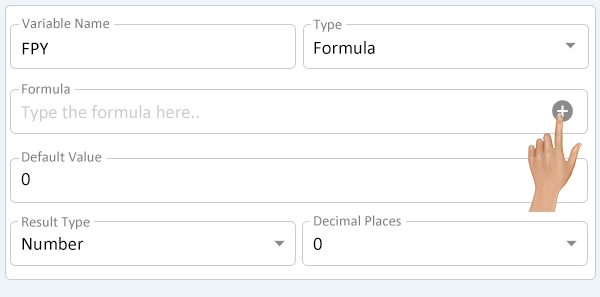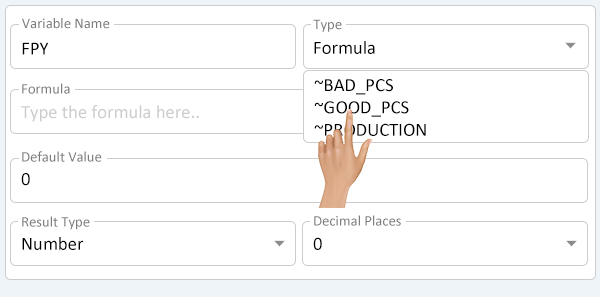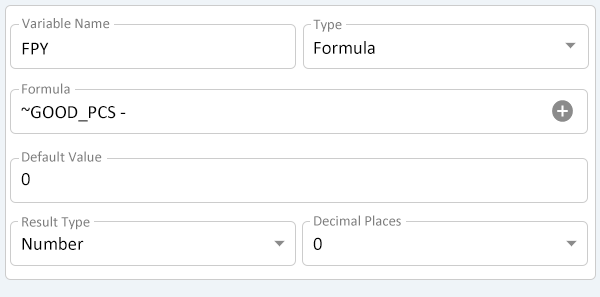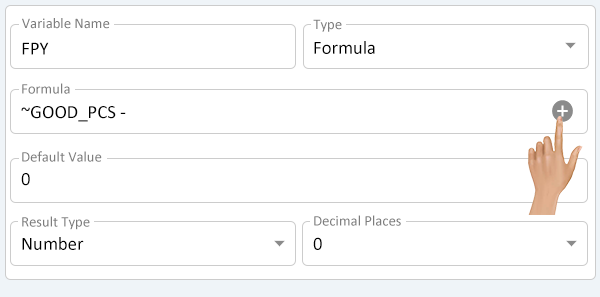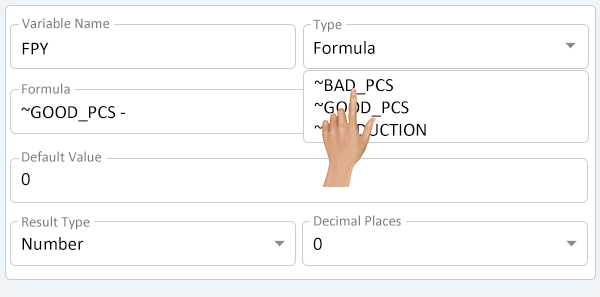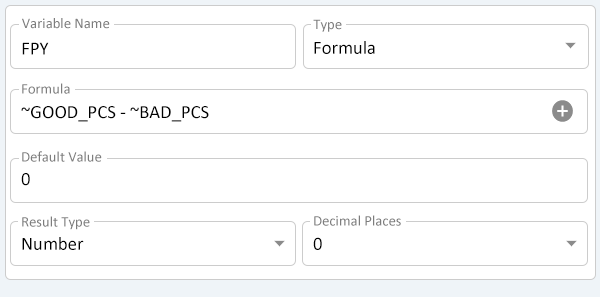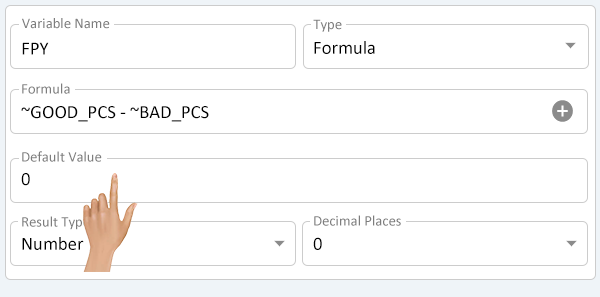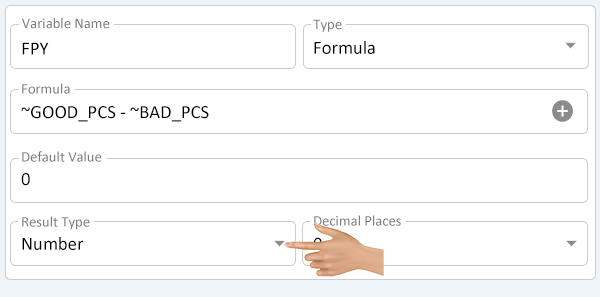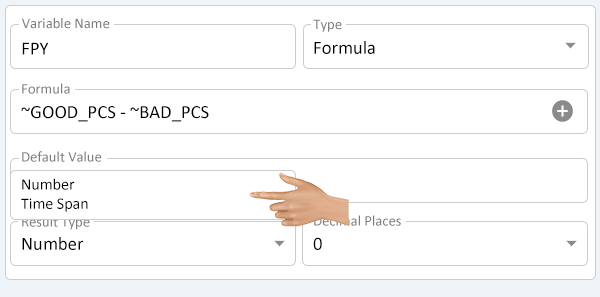Variables - Formula
From VersaVision Support
Variables can be setup on Widgets or Dashboards. Each Variable has a specific purpose or data it gathers.
This page is dedicated to the Formula Variable which allows the user to use/setup math functions for a Dashboard or Widget.
An example of a Formula Variable would be determining the First Pass Yield for a location. Good Parts - Bad Parts / Good Parts
This page explains how to setup a Formula Variable.
With a new or existing widget or dashboard opened, click on the Variables button at the top-right position above the layout.
On the Variables window click on the Add New button.
Each New Variable will have 4 property fields available. Depending on the Type selected, these fields may change. Select the Variable Name field.
Enter a Name for the Variable being created. Ensure the name is recognizable for use in creating the Dashboard or Widget cell.
- NOTE - a name must be uppercase letters or numbers. When a space is required, the user must use and underscore "_"
After entering a Variable Name, select the down arrow in the Type field.
Select Formula from the list.
The Variable Properties will change to show the following fields. Click on the Add icon in the Formula field to select a Variable
- Formula - this is where the user will enter/setup the Math function(s) to be used in the Formula.
- Default Value - this is where the user will enter what the result of the Formula should be when there is an error or no result.
- Result Type - this is where the user will define how the result of the Formula is presented on the Dashboard or Widget.
- Decimal Places - this is where the user will define how many decimal places are to be used for the Formula result.
Select the first tag to be used in the formula. In our example, the choice would be the ~GOOD_PCS Variable. Select the best option for the Variable being created.
Place the math function that needs to be processed. In our example, this would be the minus/subtract function. Enter the appropriate function for the Variable being created.
Click on the Add icon to select the next Variable in the field.
Select the next tag to be used in the Formula. In our example, the choice would be the ~BAD_PCS Variable. Enter the appropriate function for the Variable being created.
Depending on the complexity of the Formula, the user may need to add or remove additional Variables. The image below shows the finished Formula for the FPY example.
Click in the Default Value field to enter a number to be used when the Formula returns an error or no result.
The user can either type in the numeric value or use the Up & Down arrows on the right side of the field.
Click on the down arrow in the Result Type field.
There will be 2 options available - select the best options for the Variable being created.
- Number - this will display the result as an integer.
- When Number is selected there will be a Decimal Places field. Select the number of decimal places required from 0 to 3.
- Time Span - this will display the result in the HH MM SS format.
- Number - this will display the result as an integer.

|



